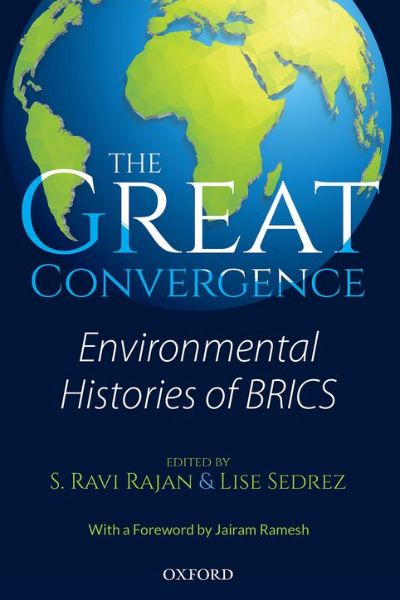Ravi Rajan, a professor of environmental history at UC Santa Cruz, has co-edited The Great Convergence: An Environmental History of BRICS (Oxford University Press, 2018) a new volume that examines the environmental policies of Brazil, Russia, India, China, and South Africa from a historical perspective.
Referred collectively as BRICS, these five nations combined account for one-fifth of the global gross domestic product (GDP). Historically, BRICS are a new entity. The acronym was coined in 2001 by Jim O’Neill, the chief economist in Goldman Sachs’s London office to signify how these countries were emerging as powerful economic forces.
According to Rajan, the dynamics of BRICS also represents the coming together–or convergence–of countries with distinct histories, cultures, and values.
“Here are countries with very little in common as far as history goes, and with significant trust deficits between them, staking a climate for a divergent future,” wrote Rajan in the book’s introduction. A historical perspective is crucial to understanding existing and future social and environmental challenges faced by BRICS nations, said Rajan.
“The past matters. It matters in understanding threads in policymaking–on why certain ideals and frameworks emerged and endured. It matters to explain institutional evolution and the efficacy or not of governance. It matters to understand social acceptance and resistance,” wrote Rajan.
The Great Convergence: An Environmental History of BRICS shows how history can inform contemporary debates about governance, poverty, equity, and sustainability. The volume is comprised of essays from 16 scholars who examine the environmental history in each of the BRICS countries. Their analysis focuses on three basic themes–the state, civil society, and historiography–that Rajan hopes can serve as building blocks for future research.
Lise Sedrez, an environmental historian at Universidade Federal do Rio de Janeiro, Brazil, is co-editor.
In addition to his academic position in the Environmental Studies department at UC Santa Cruz, Ravi Rajan has been Senior Research Fellow at the National University of Singapore and held various academic institutions in India. He is also a member on the Board of Directors of Greenpeace International and has previously served as President of the Board of Pesticide Action Network, North America. Rajan is the author of Modernizing Nature (Oxford University Press, 2006) and Sustenance, Security and Suffrage (forthcoming). From 2006-12, Rajan served as provost of Rachel Carson College where he pioneered the college’s green curriculum. Rajan is a founding member of the editorial board for the journals Environment and History and Environmental Justice.


